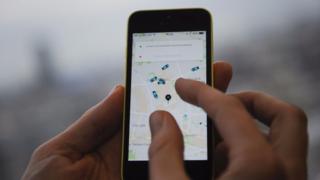What happened in the city that banned Uber
 |
| Photo credits: GETTY IMAGES |
Uber's new chief executive Dara Khosrowshahi will be in the UK on Tuesday for a meeting with Transport for London (TfL). He hopes the negotiations will stop the imminent revoking of his company’s license to run its ride-sharing business in the capital.
When TfL, backed by Mayor Sadiq Khan, announced Uber would no longer be allowed to operate, the service's 3.5m users, and 40,000 drivers, were aghast.
Despite the very best efforts of the cab trade, Uber has become a valued way for Londoners to get around, particularly late at night.
The same was true in Austin, Texas. It’s a city that shares few similarities with London, other than its own bitter tussle with Uber - the fallout from which could contain clues as to what might happen if, and it's a big if, TfL follows through with its threat.
Uber had been available in Austin since 2014. But on 10 May 2016, Uber (and rival service Lyft) turned off their apps and left.
Less than 24 hours earlier, Austinites had gone to the polls to vote on Proposition 1. It was a law that removed a requirement on ride-sharing companies to gather fingerprints as part of their background checks on drivers, as well as sharing more data with city officials.
Uber didn't want to do this. It argued that the fingerprint database drivers would be cross-checked against would be ineffective.
t's also likely - though Uber never expressed this publicly - that adding a layer to the sign-up process would make it more time-consuming, and expensive, to recruit drivers.
It's something the company, in all the markets it works in, constantly seeks to avoid - and in Austin it was prepared to spend big to avoid the restrictions.
But by June, Uber and Lyft were back. There hadn’t been a compromise on security or data. Instead, state power in Texas overruled Austin’s local decision by creating statewide rules on ride-sharing that did not insist on fingerprint checks.
Within a week, one Austin app, Fare, had folded. RideAustin saw its bookings drop by 55% - and it hasn’t ever recovered.
The local apps all maintain that they have plenty of drivers, who make more money on their apps per trip than Uber or Lyft. And though it's difficult to measure independently, the fares are the same or cheaper too.
Which makes you wonder - why did users go back to Uber and Lyft?
"They are very good at leveraging their cash position to do lots of free rides and promotions to get their share back," Mr Tryba said.
Fasten’s Mr Christoff thinks brand recognition beyond the city is the problem.
“The part that we’ve lost is visitors. For one year people landed at Austin’s airport, and they found out the hard way that the default ride-sharing apps on their phone didn’t work.
"Once Uber and Lyft came back, business continued as usual. [But] the locals stayed with us.”
However, drivers too have turned more frequently to Uber and Lyft instead of the smaller apps.

Comments
Post a Comment